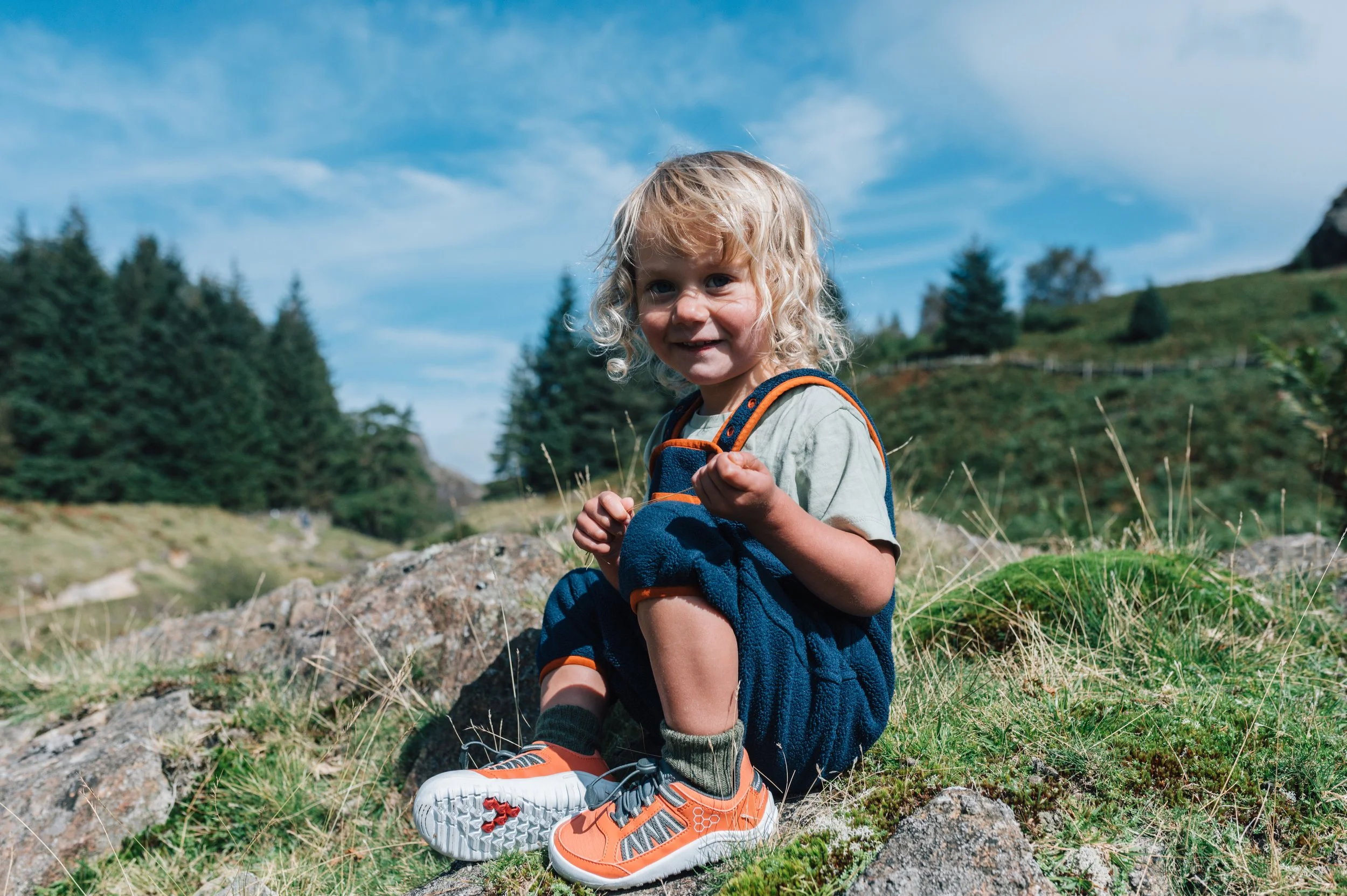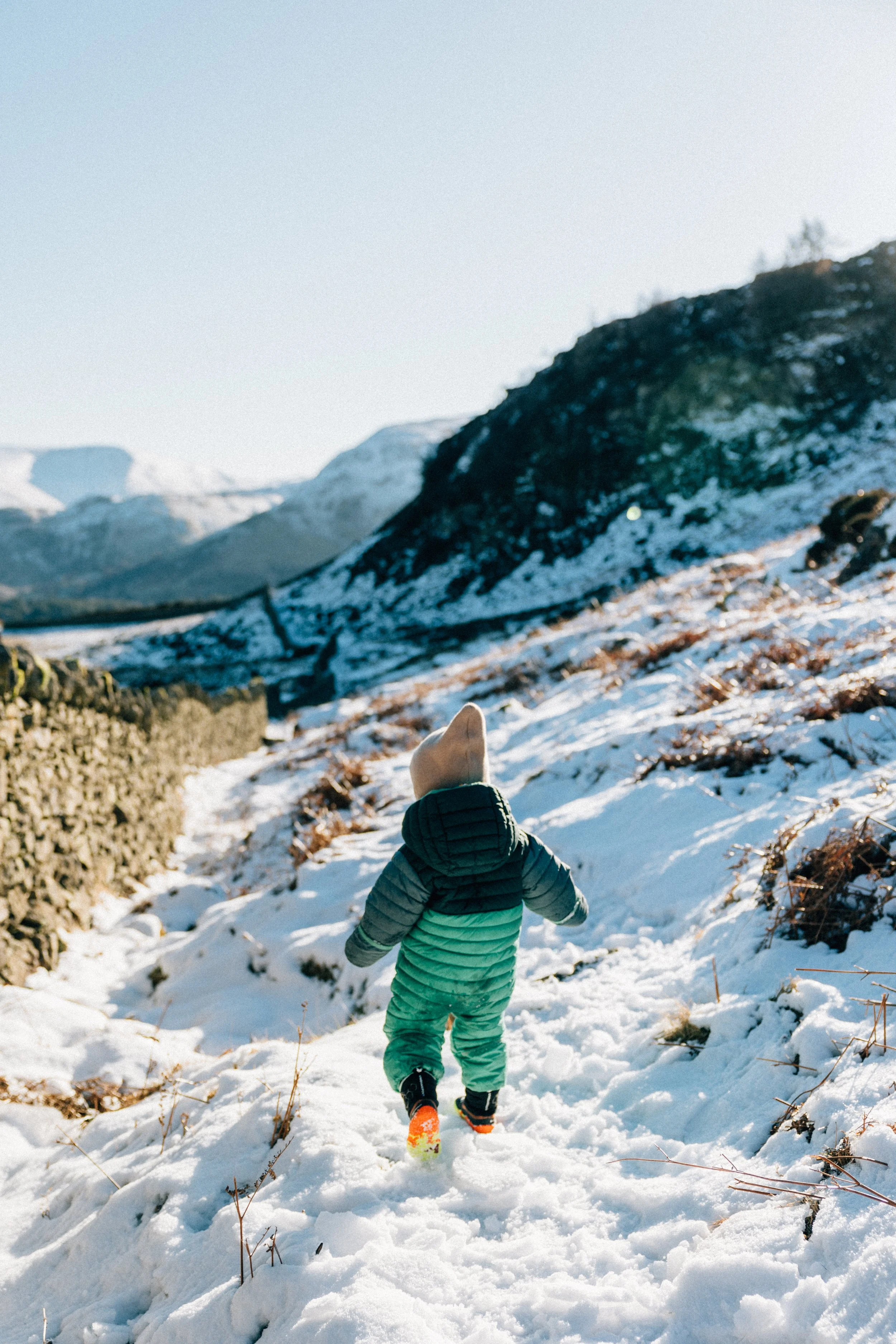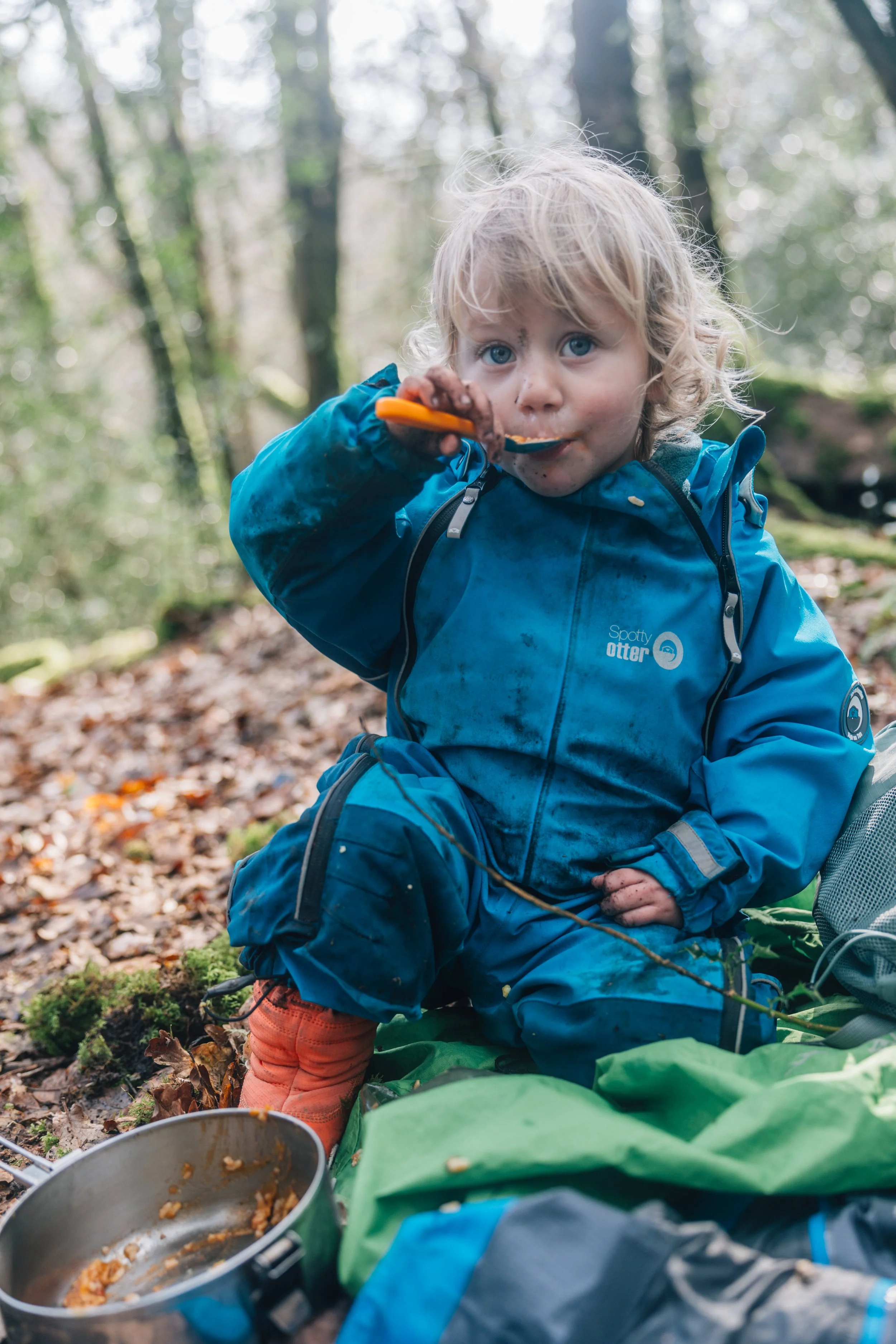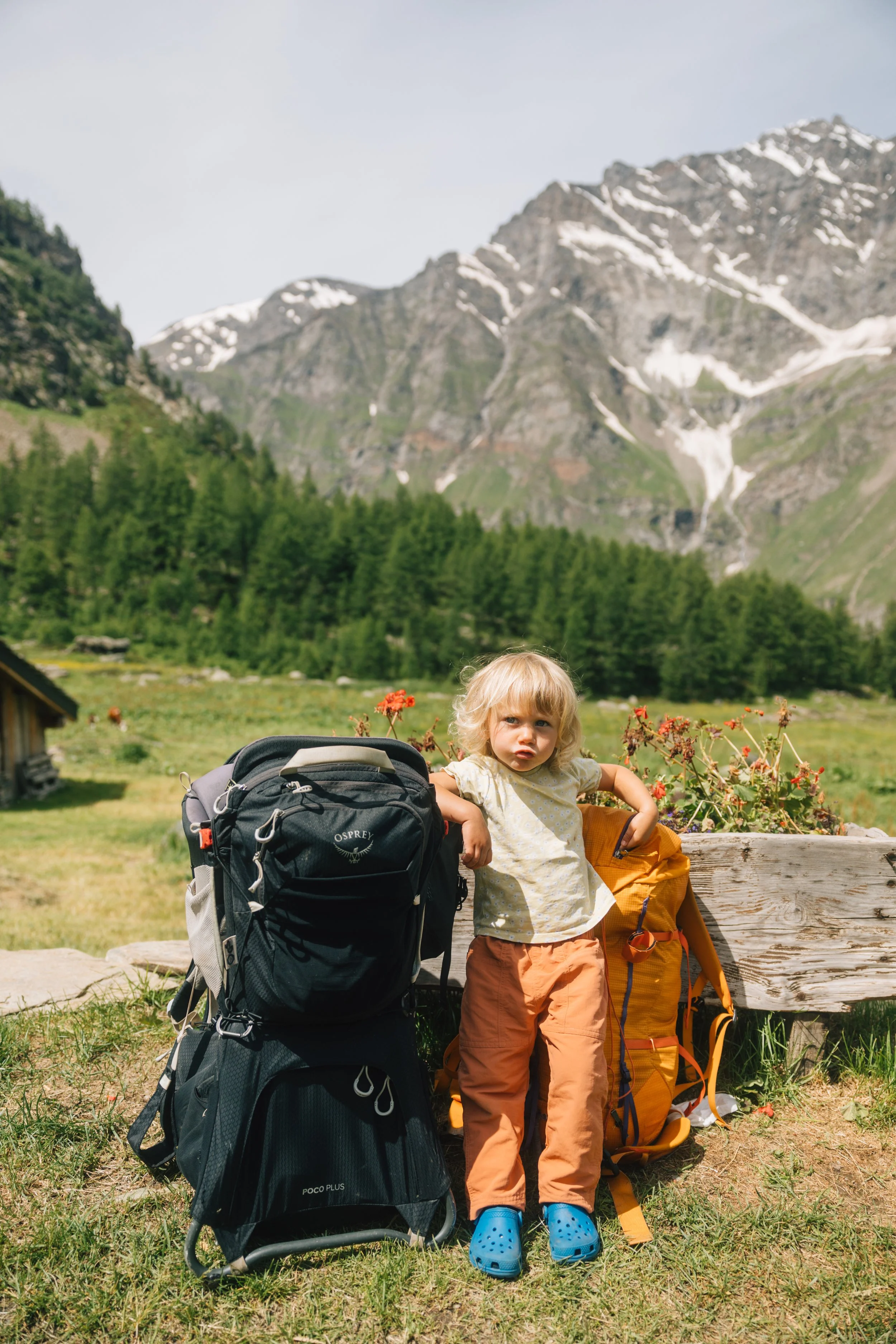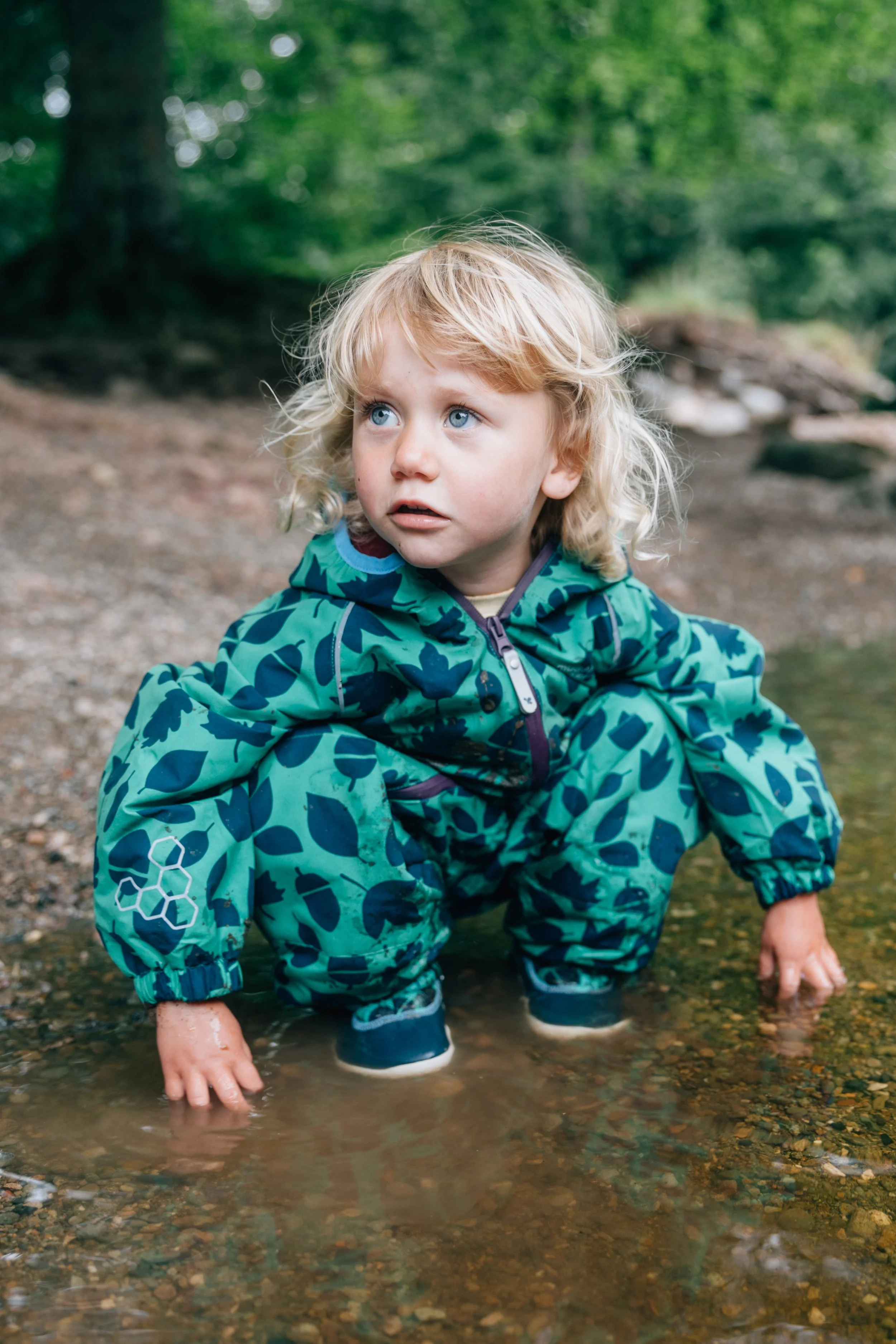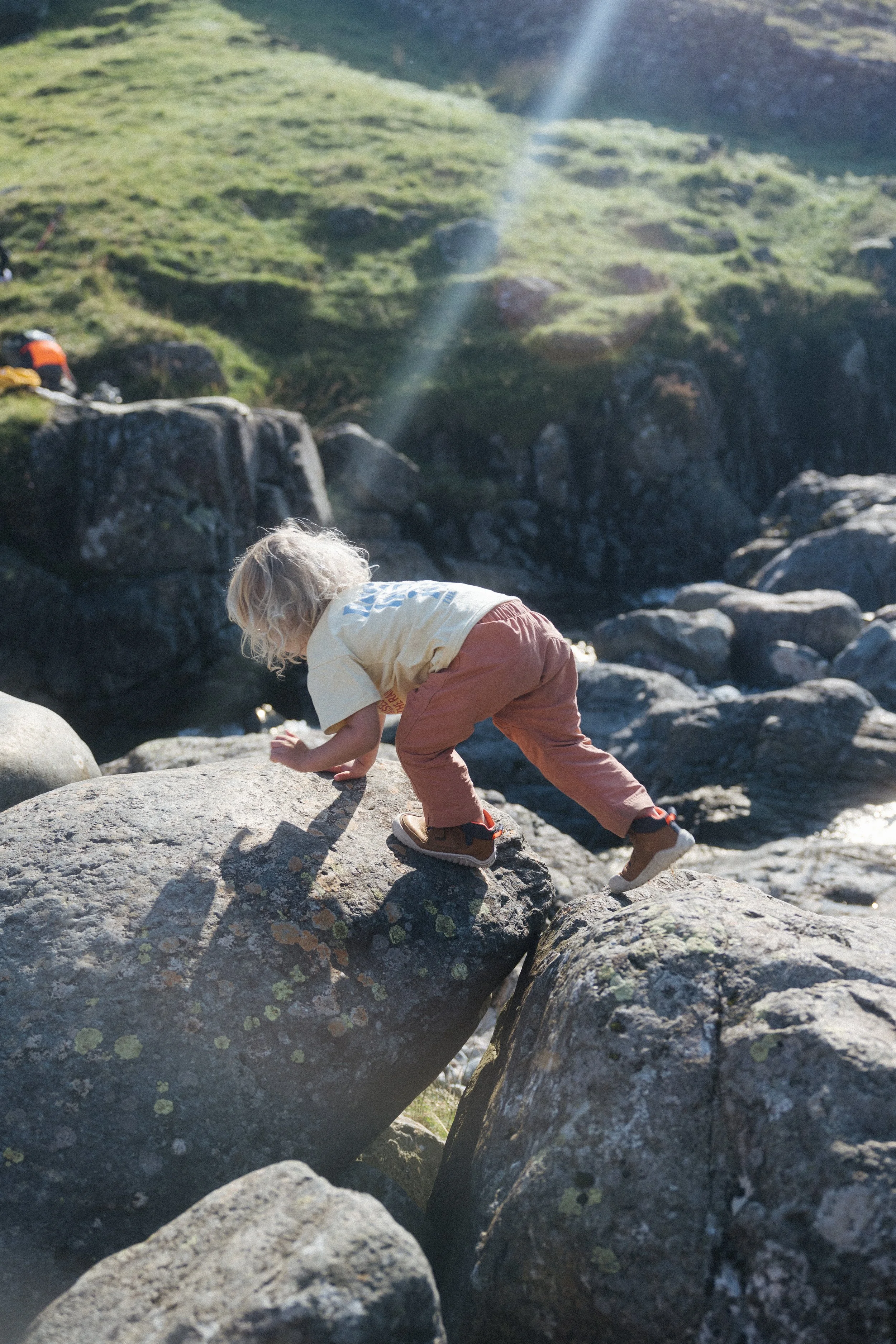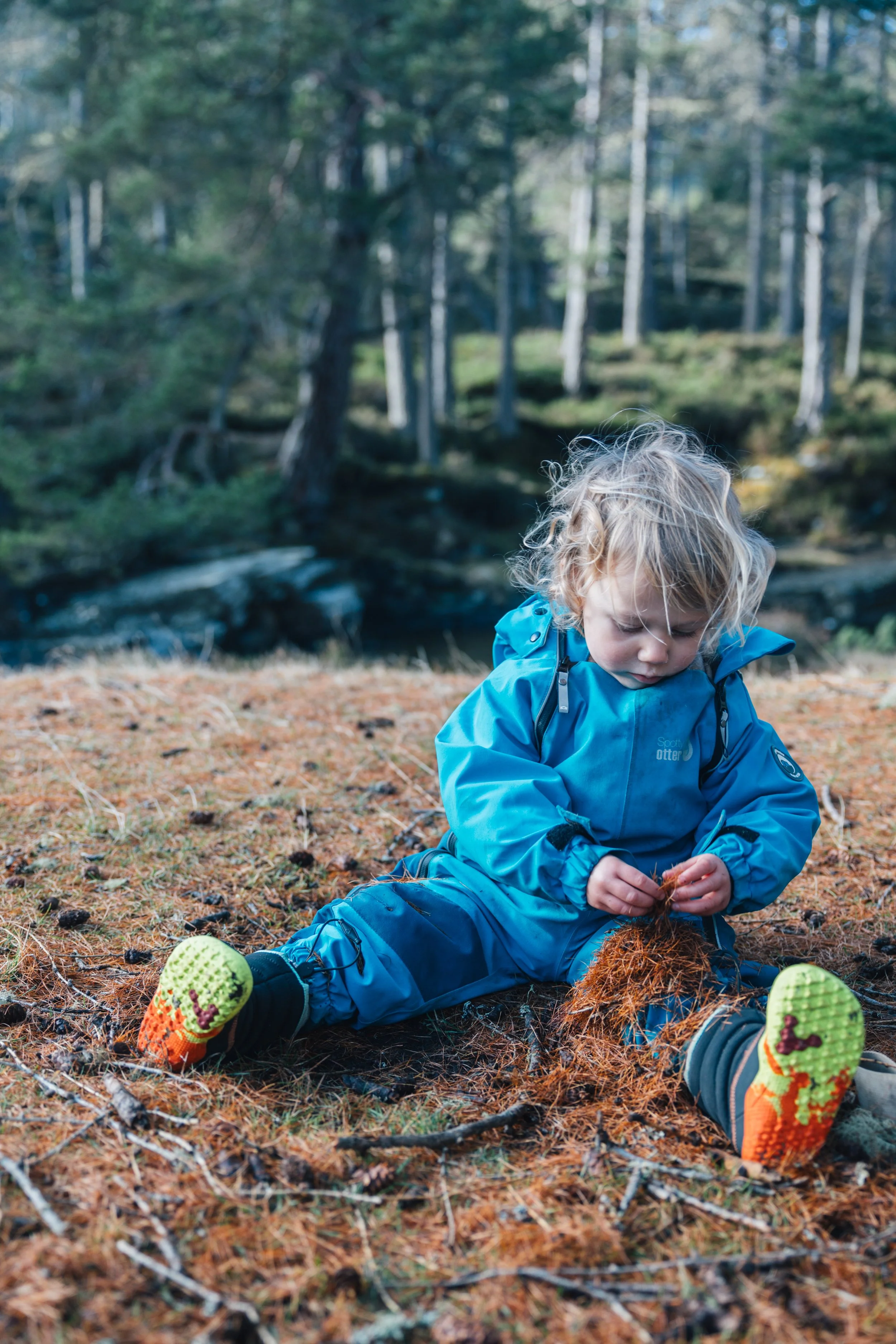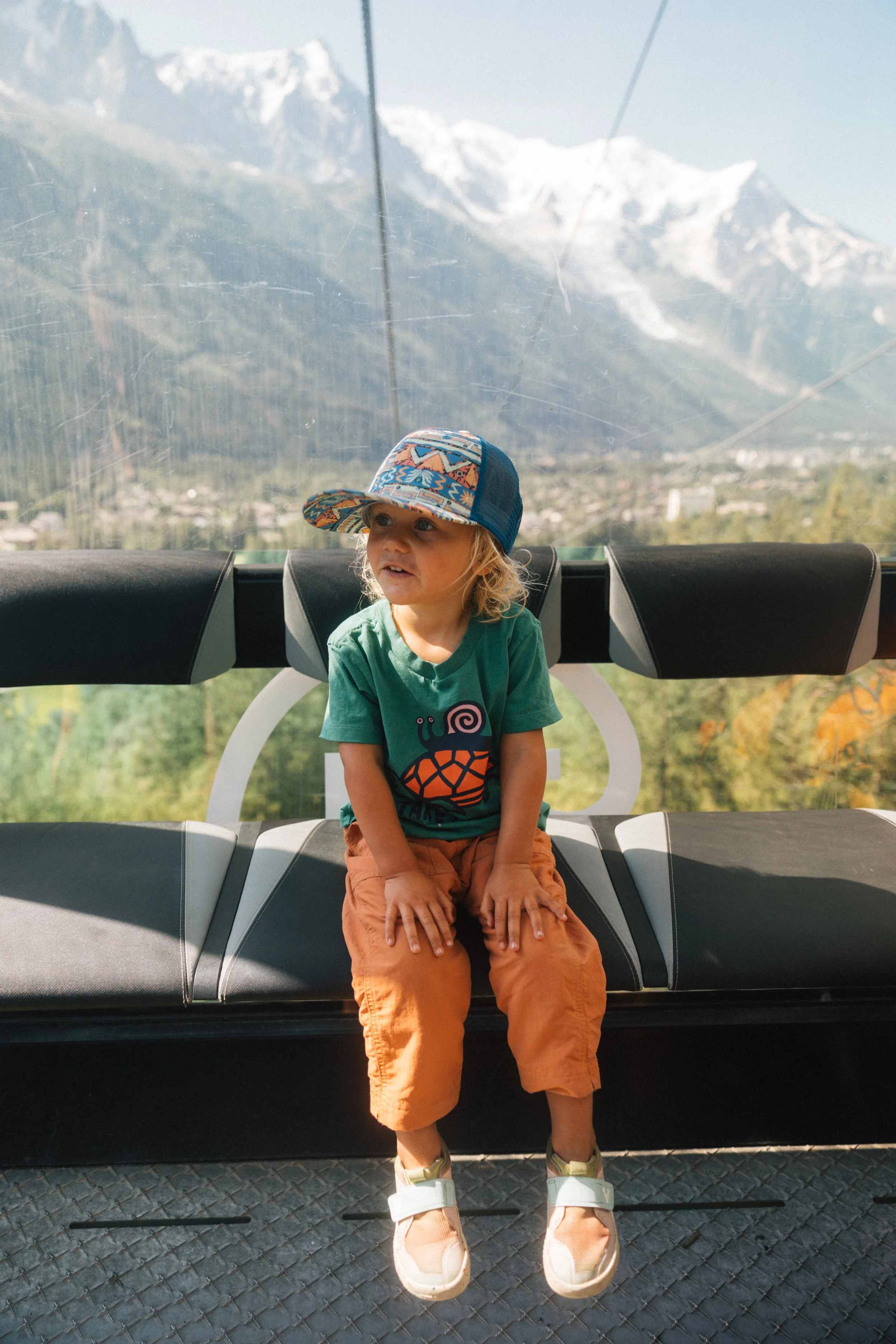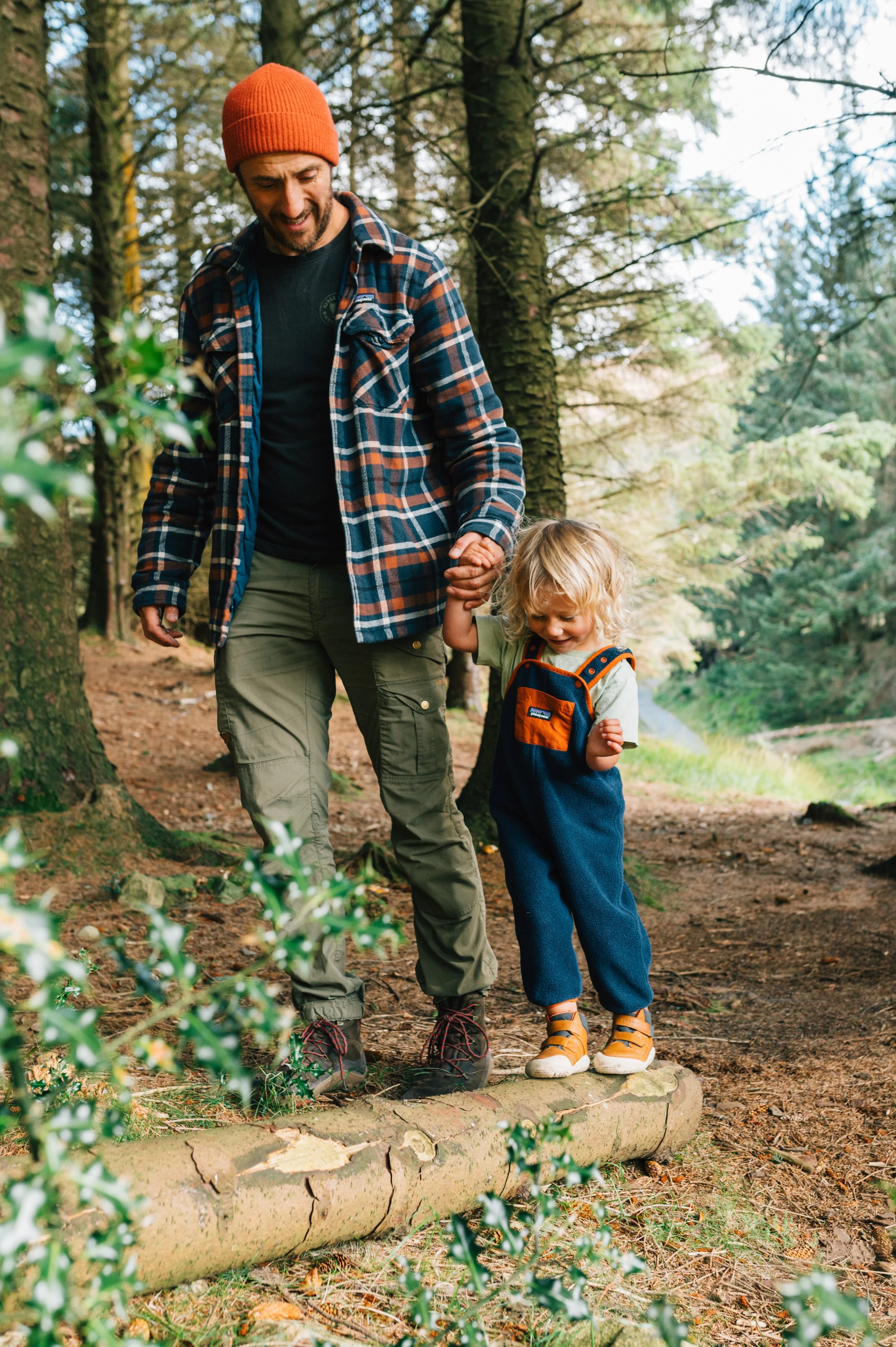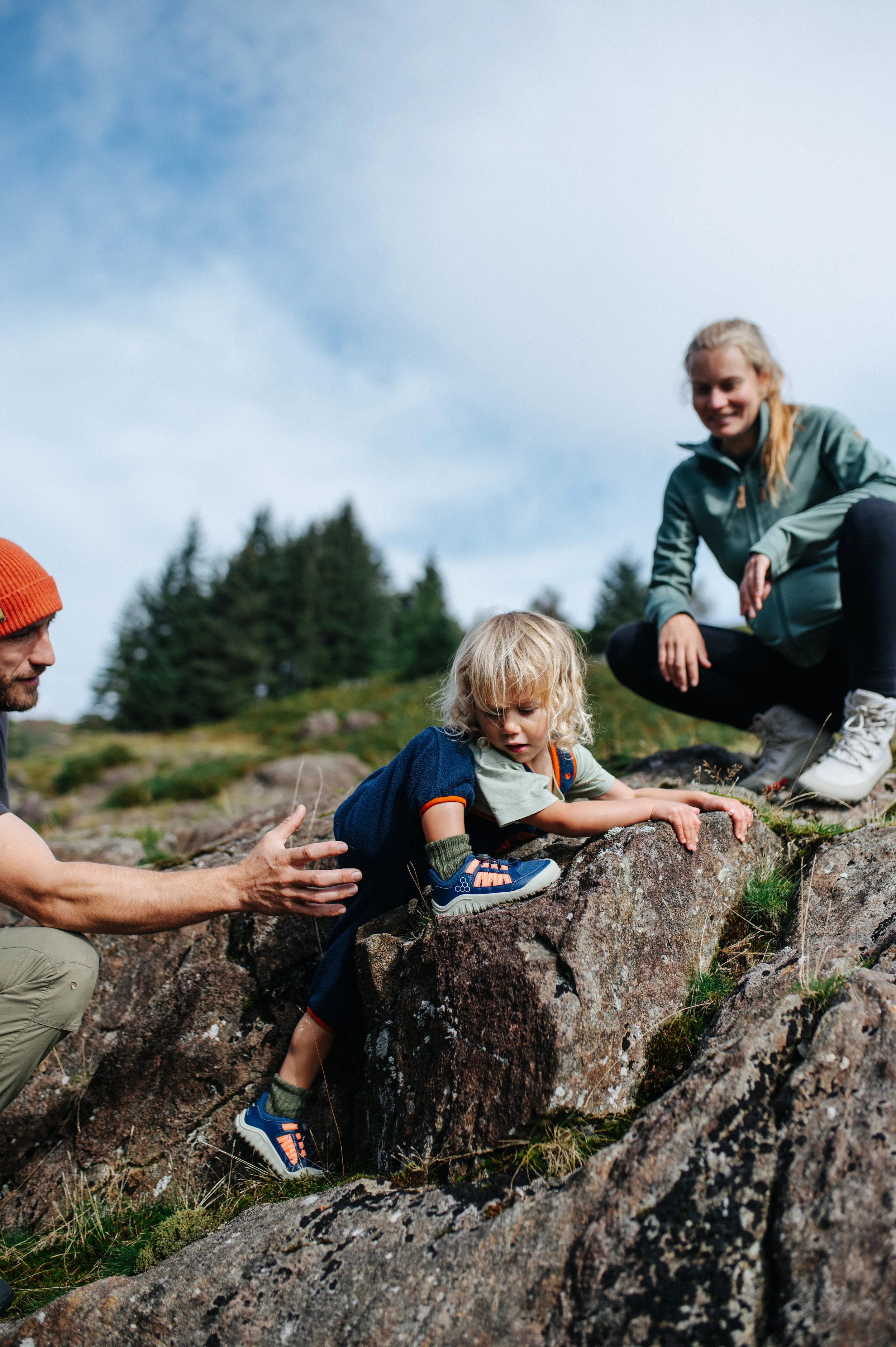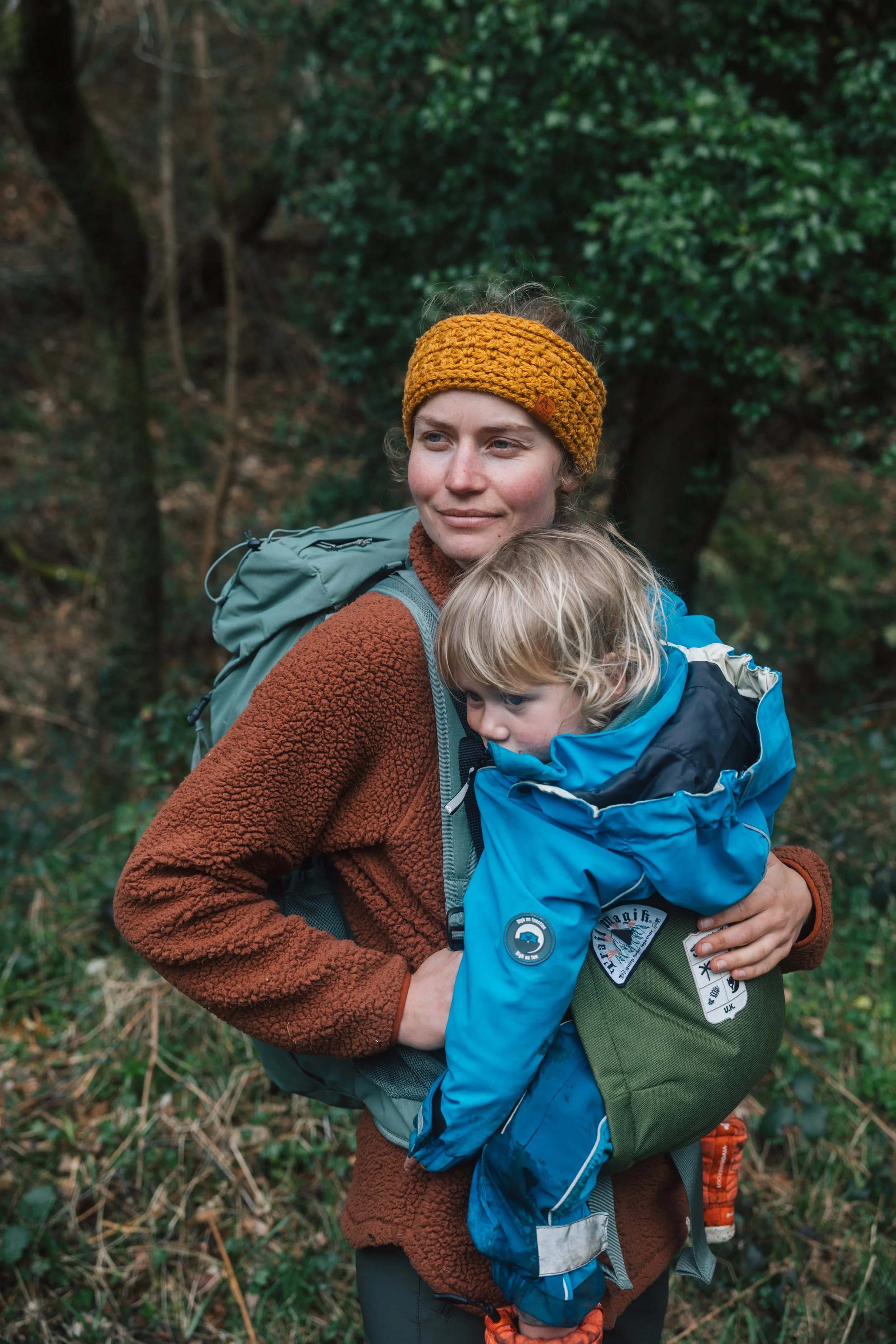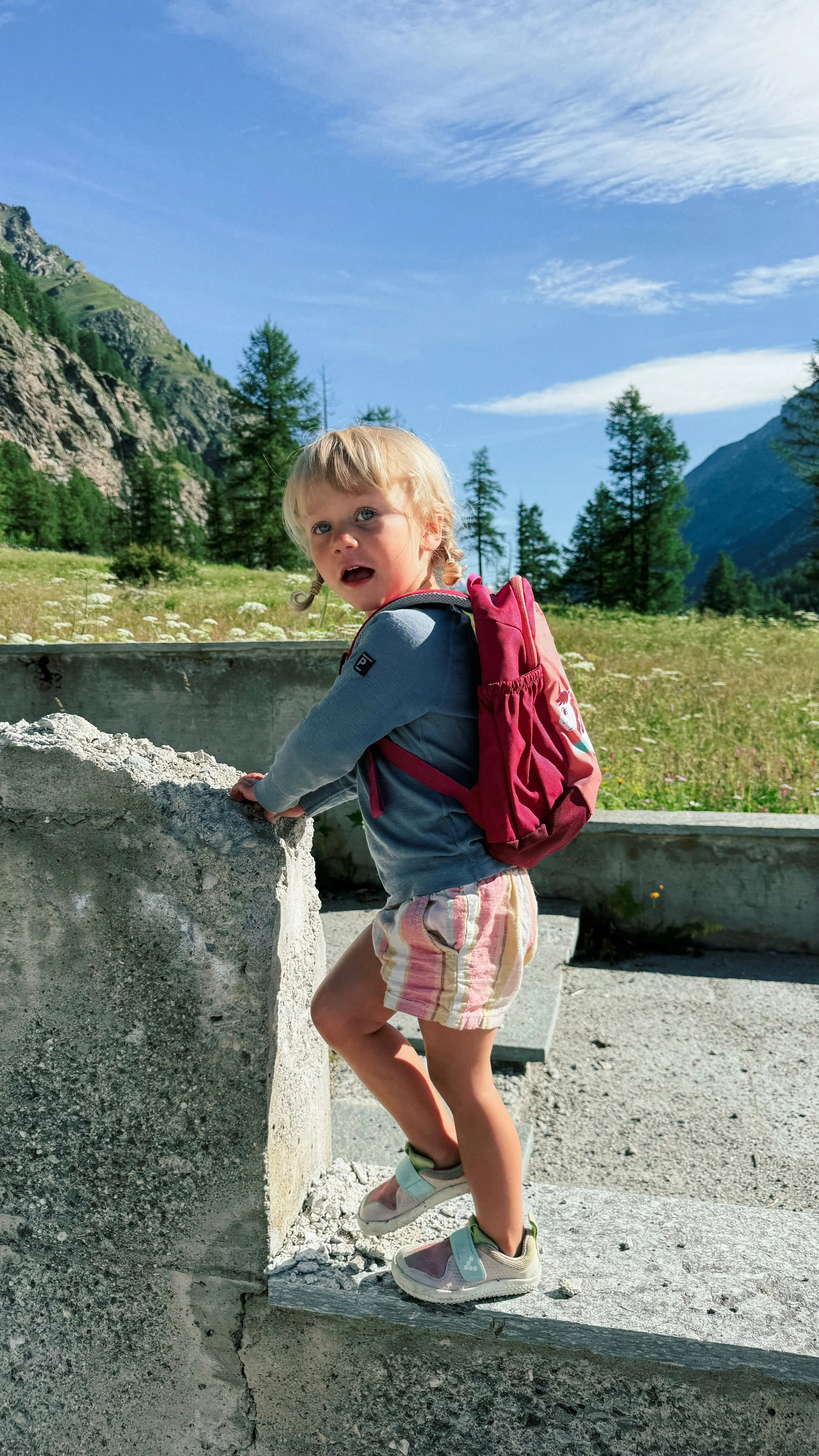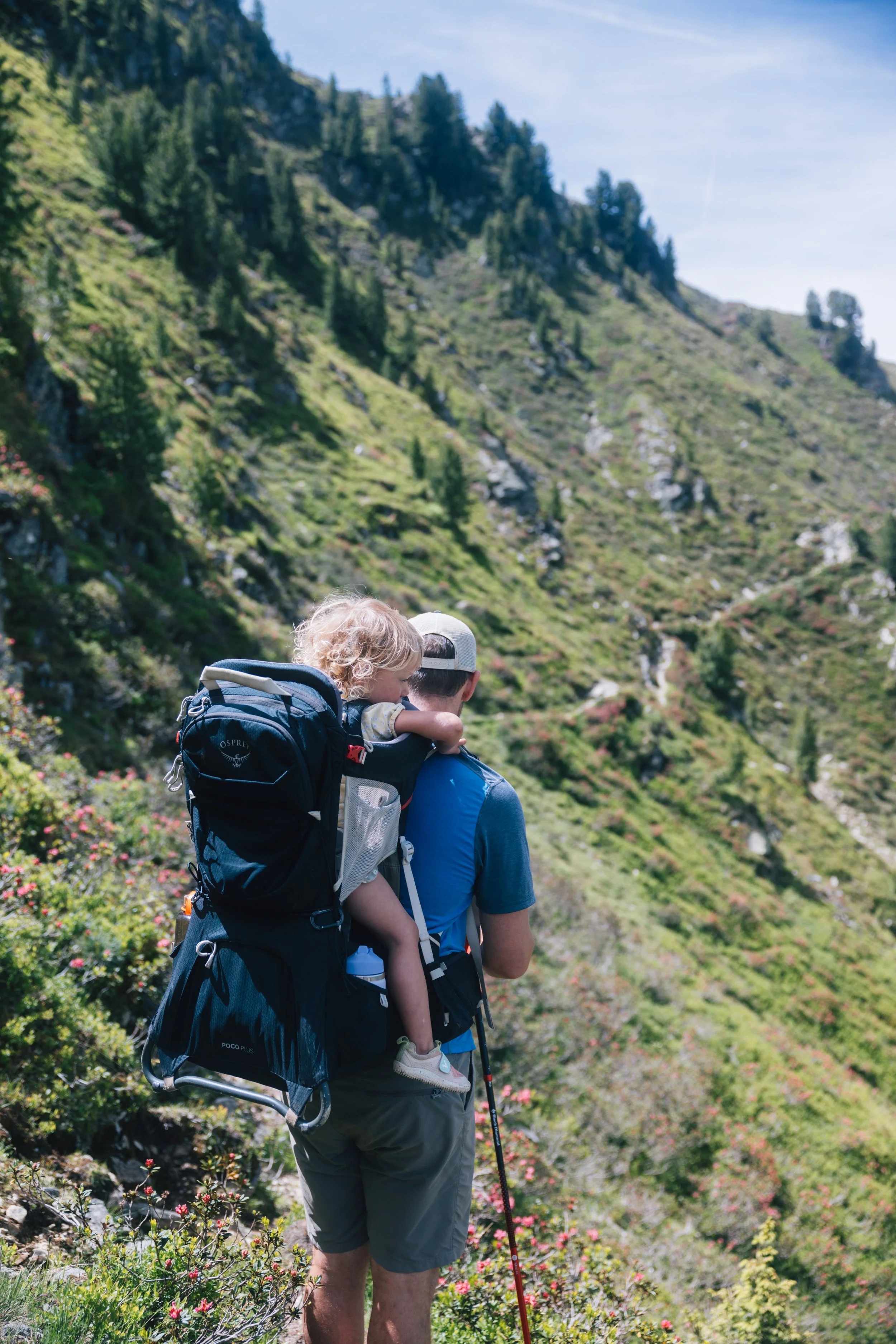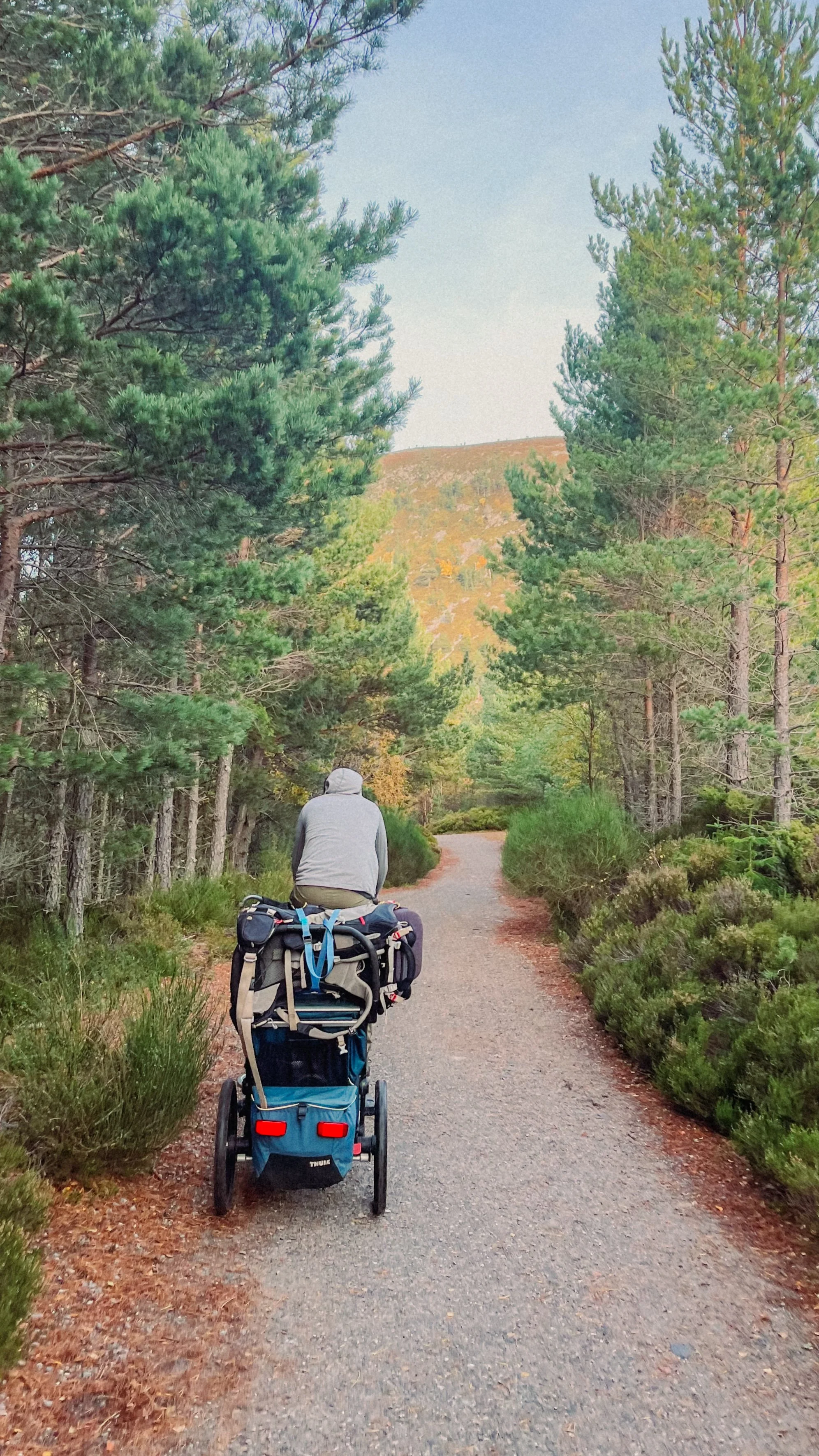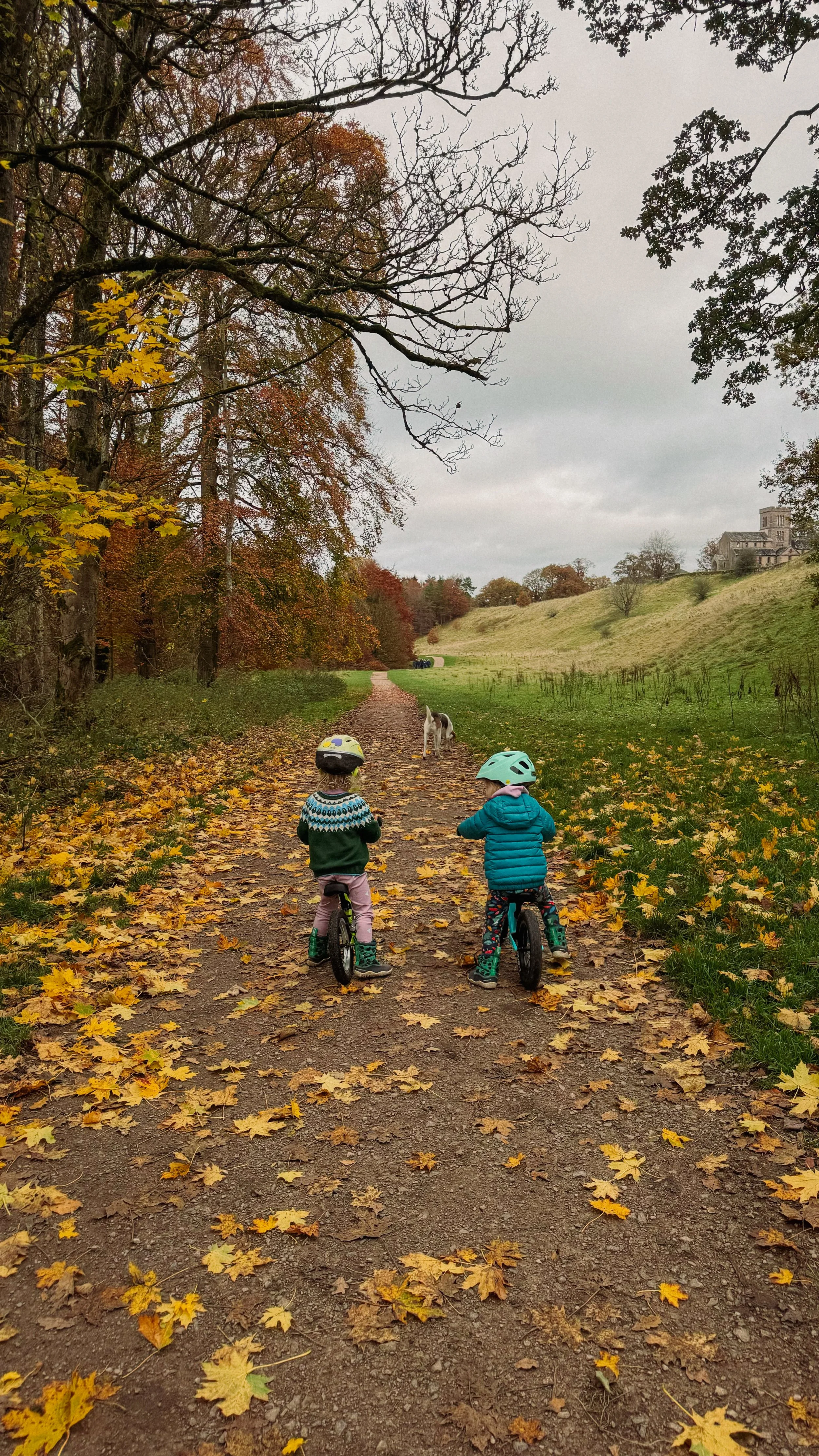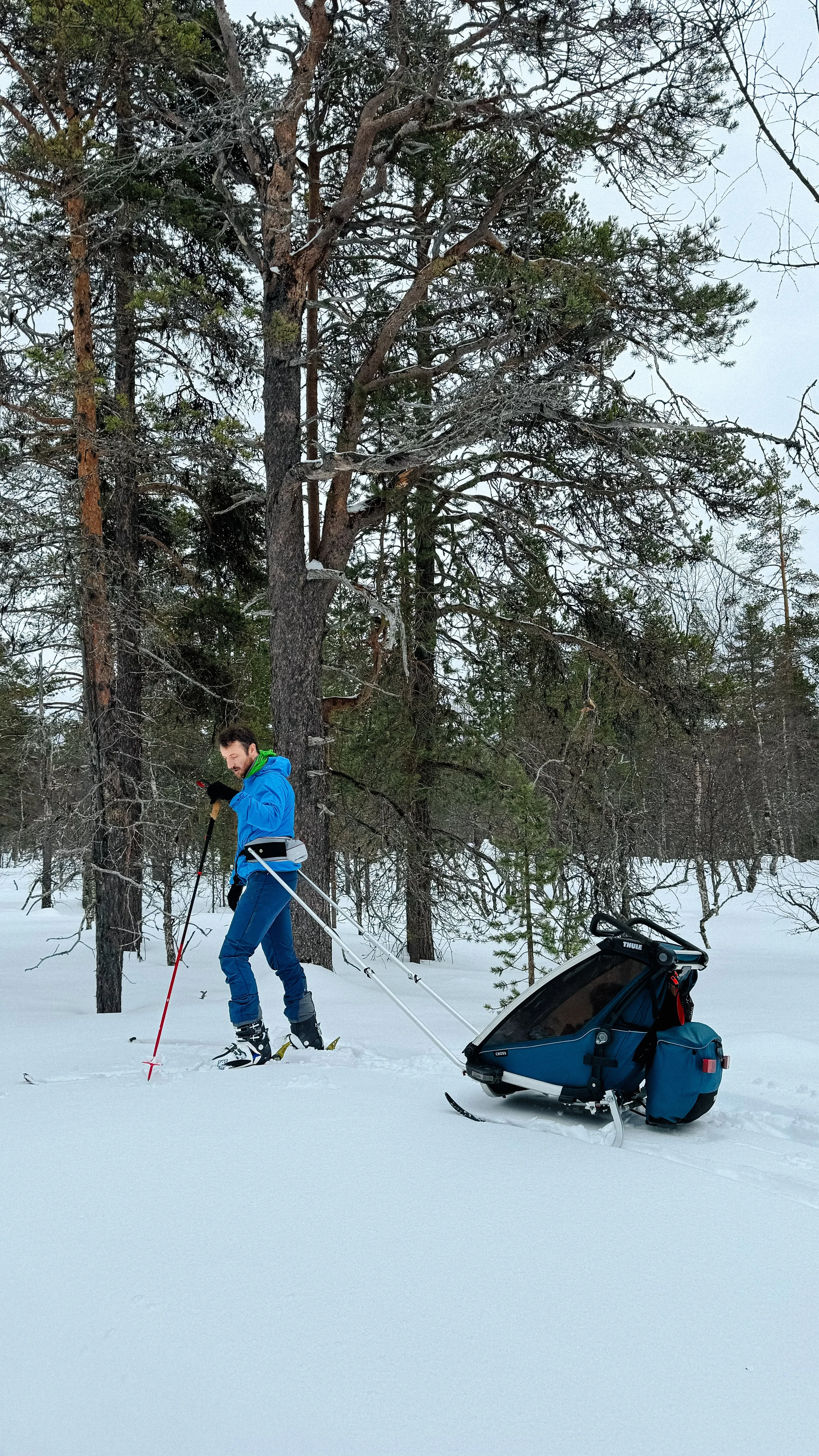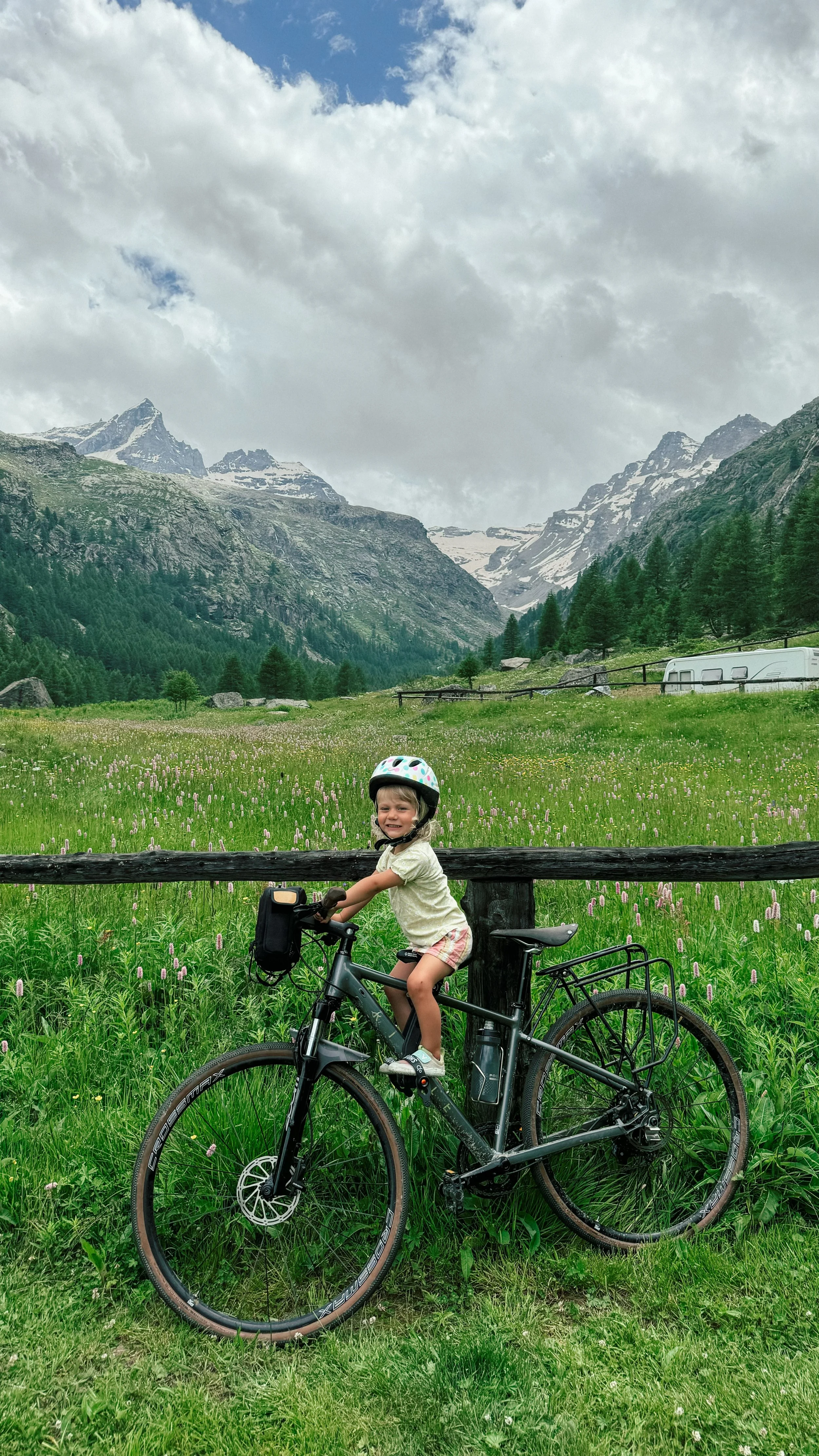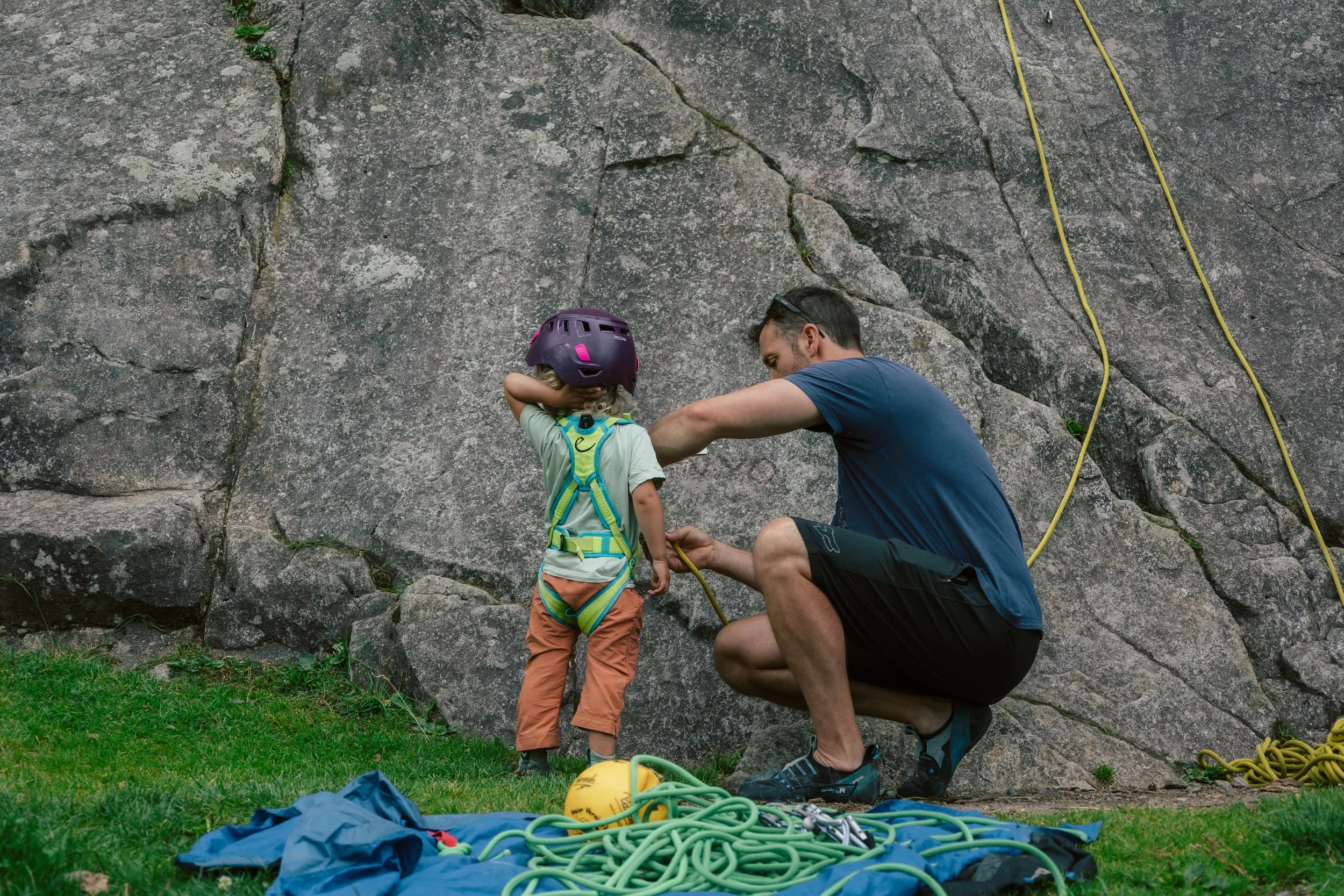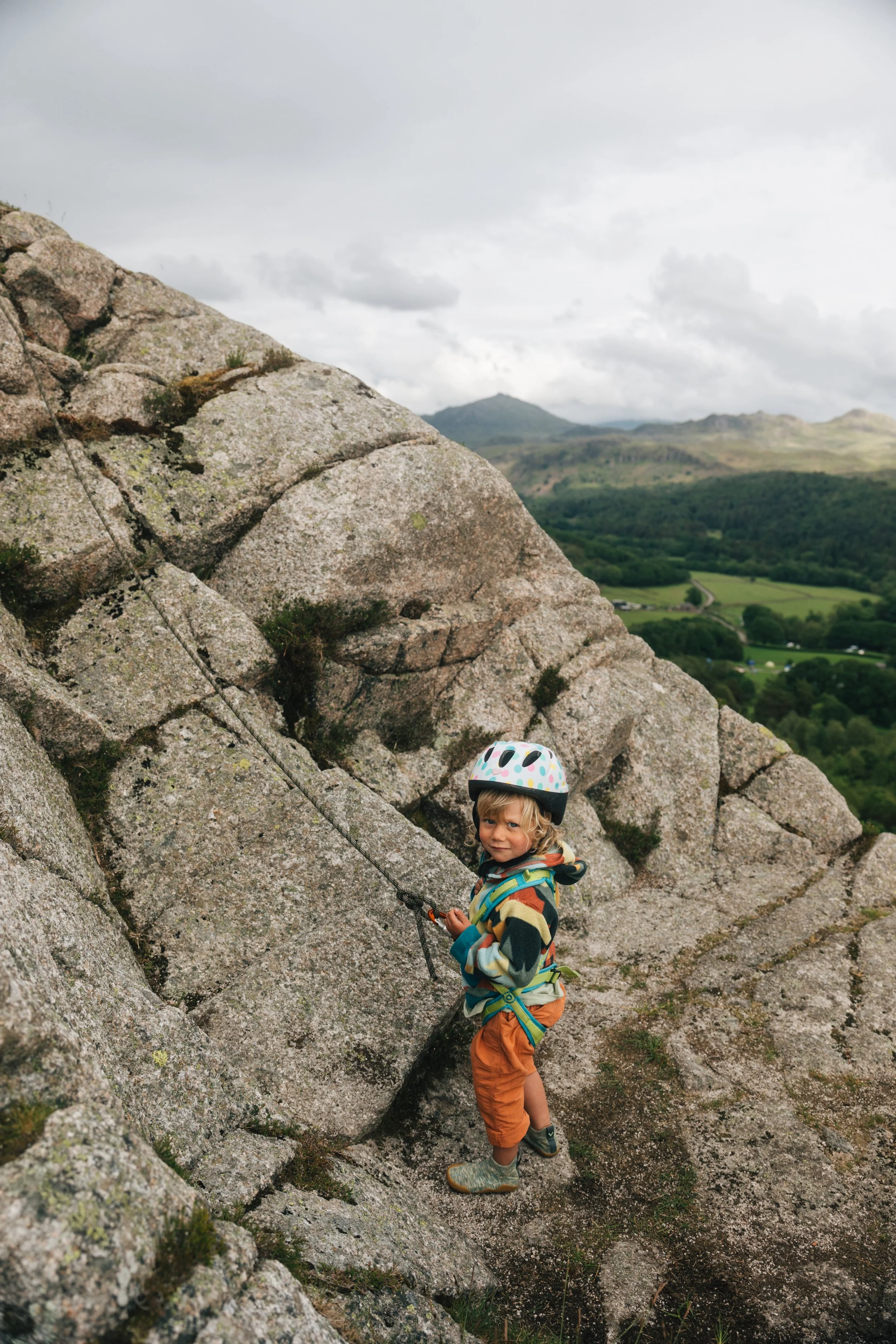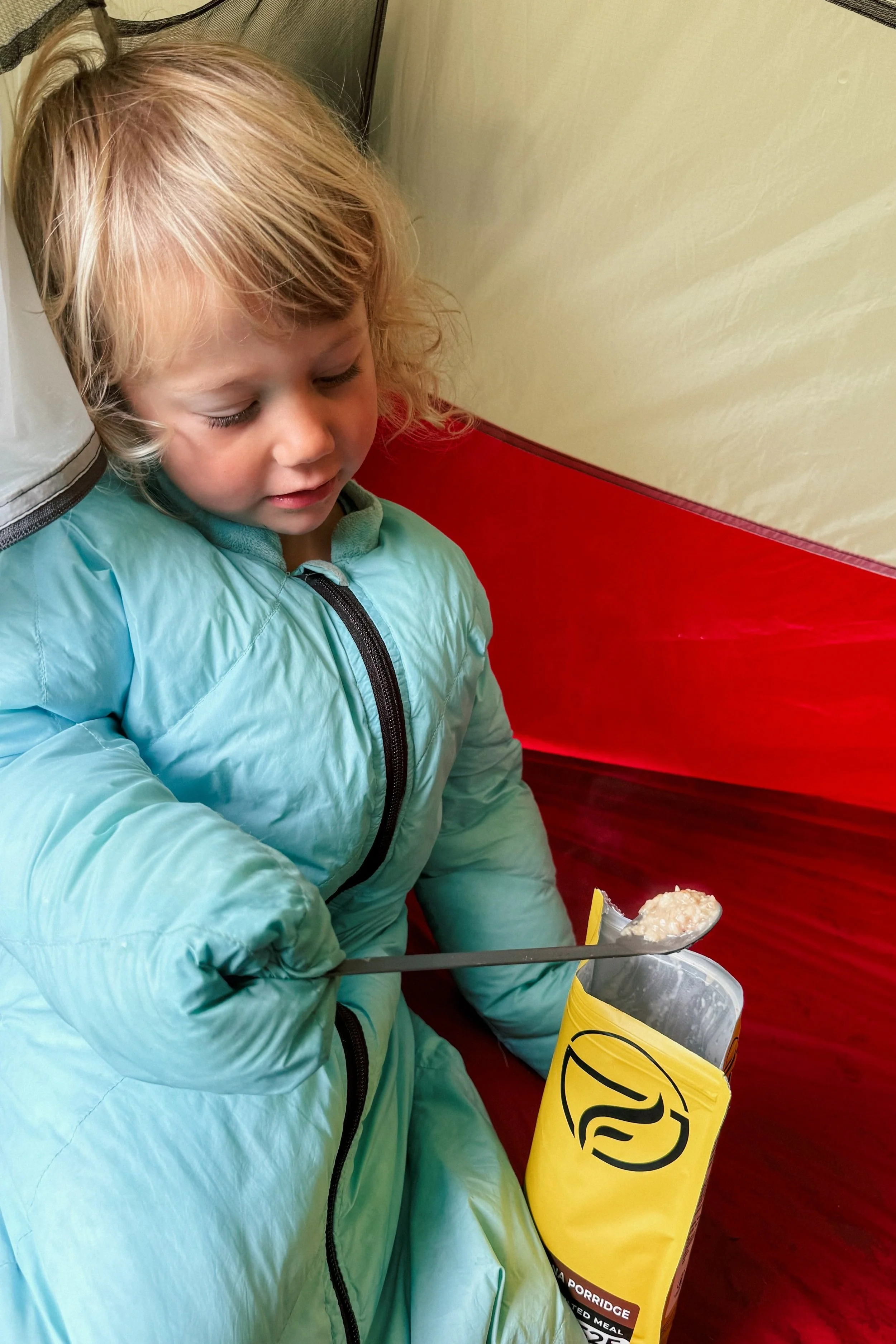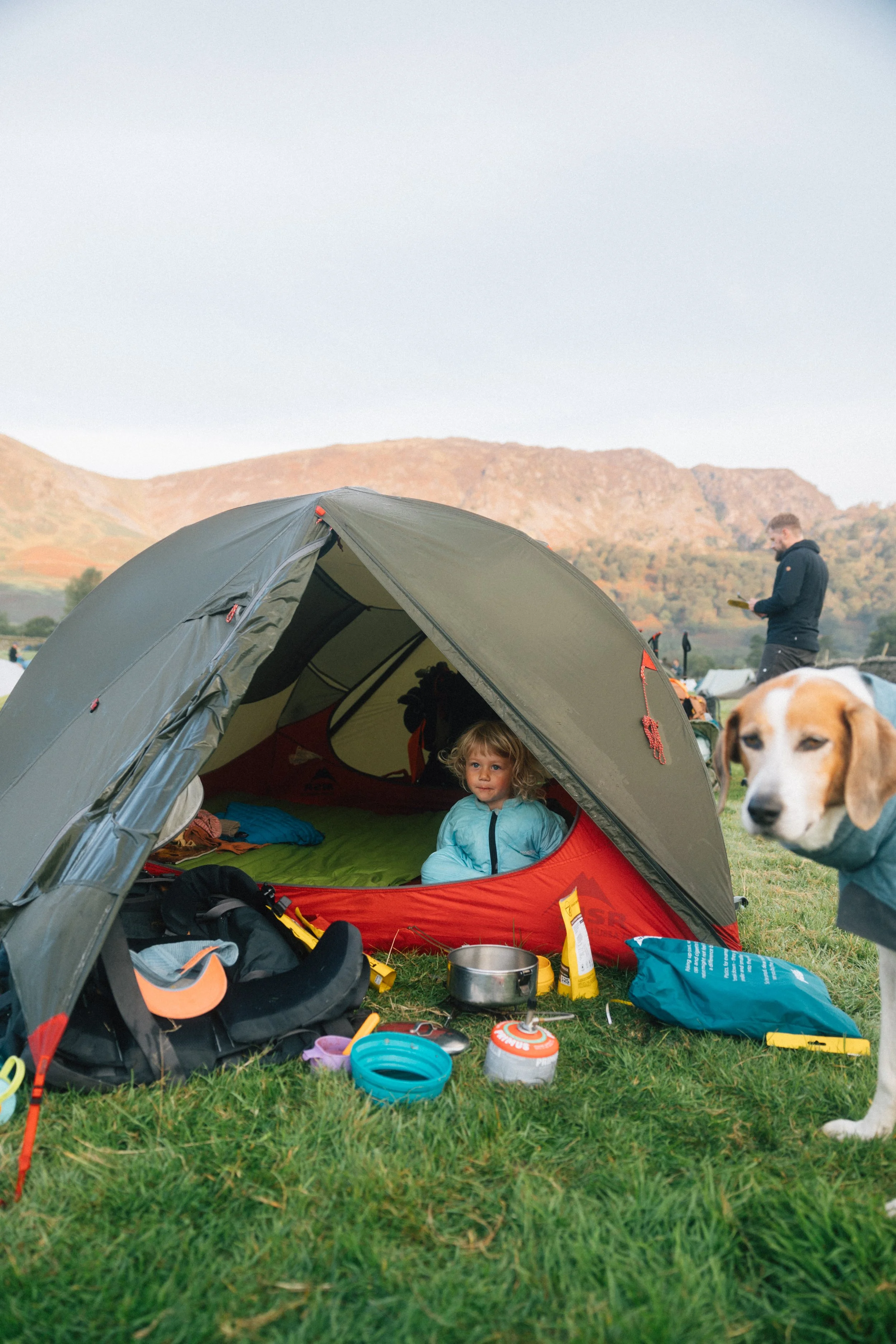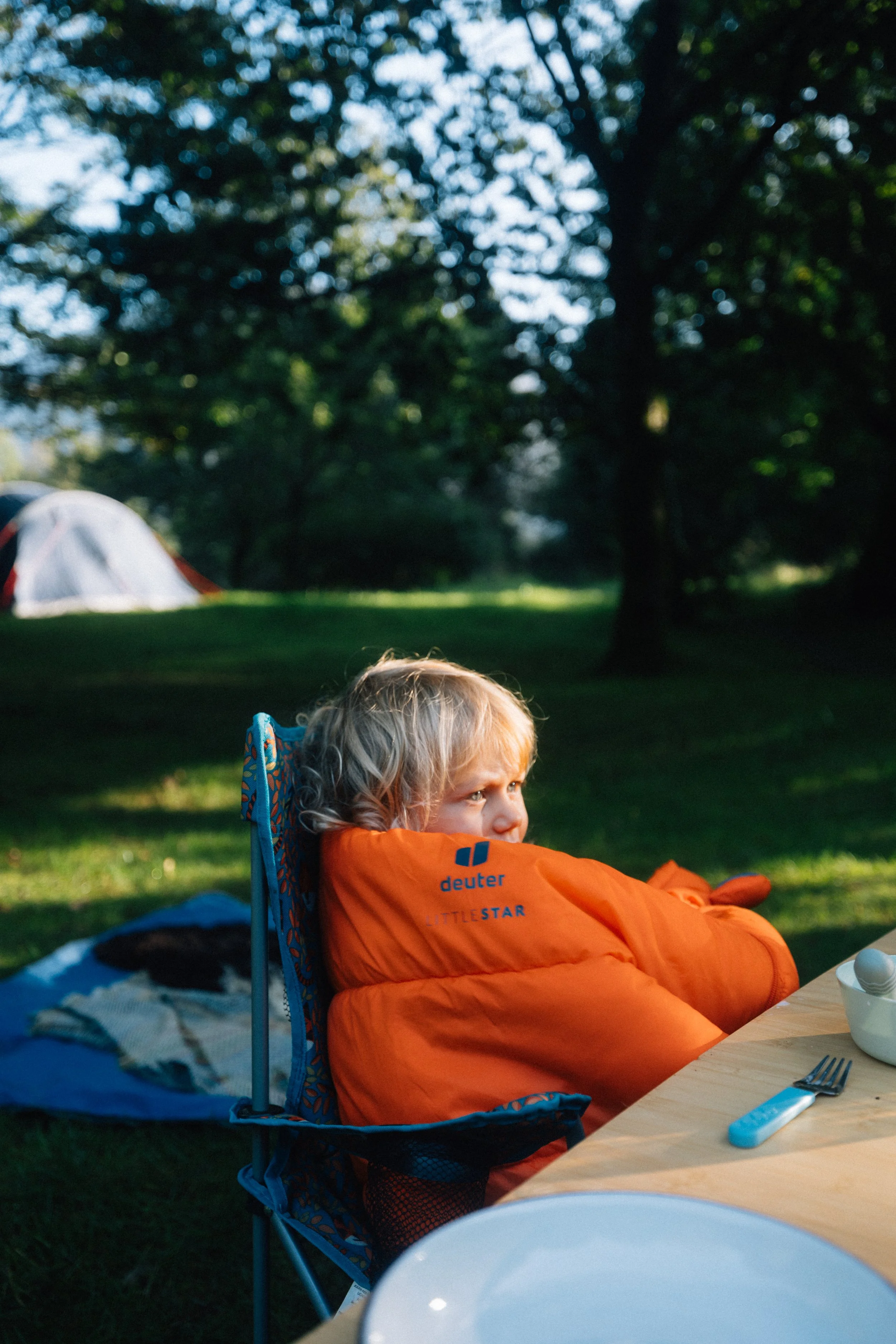Outdoor Gear for Adventurous Toddlers
Our little girl, Aífe, is now three, and over the years we’ve taken her on some incredible adventures. From cycling and climbing to camping, cross-country skiing, and, of course, hiking, we've embraced the great outdoors as a family. The last time we wrote about our favourite outdoor gear for little ones, Aífe was just 9 months old. Now that she’s a toddler, we thought it was time for an update with recommendations better suited to her age. There’s definitely some overlap with our previous post, so if you’ve got a younger baby, it’s worth giving that one a read too. In this post, we cover outdoor clothing as well as specific gear for hiking, climbing, cycling and camping. We hope it inspires some adventures of your own!
Outdoor Toddler Clothing
I thought I’d start with clothing which is toddler appropriate for all kinds of adventures. We still dress our toddler in the same layering system we have used since she was a baby — baselayer, mid-layer, insulation and waterproof — but the layers themselves have changed slightly to account for her walking and generally being more active.
Baselayers — we really like Merino wool as a material for baselayers as it’s moisture wicking and temperature regulating, and the brands we’d recommend are Polarn o. Pyret or Dilling. However as a toddler our daughter started to protest about wool layers being itchy (she has very sensitive skin!), so if you have a toddler who is the same then we’d recommend synthetic baselayers from a brand called Odlo which are softer against the skin while still adding a decent thermal protection in the colder months. Synthetic layers are also a little easier to wash as you can just throw them in the washing machine with other clothing.
Midlayers — the midlayer can simply be any kind of fleece or jumper to add an extra layer of warmth. In the winter this layer would go under an insulated and/or waterproof jacket, but in the summer this might end of being the top layer so bear that in mind when choosing something. We have a few great fleeces from Patagonia, Dilling and Polarn o. Pyret, but honestly you don’t need to break the bank with this layer and I’d recommend any kind of wool or synthetic jumper or jacket for a toddler. Cotton isn’t ideal as it gets cold when wet and takes a long time to dry.
Insulation — as a layer of insulation, you can choose either synthetic or down. Down tends to be warmer and more packable, while synthetic is a little bulkier but performs better when wet and is easier to clean — therefore making it a little more practical for messy toddlers and UK weather (which tends to be more mild and wet). Saying that, we’ve always got Aífe a Patagonia down jacket as we think they are fantastic pieces of kit that are worth the investment if you get outside a lot. The last one I bought her came from Vinted for a fraction of the price of a new coat, so keep your eyes peeled on there! As a younger toddler, Aífe regularly wore the Columbia Powderlite Bunting which is an all-in-one synthetic snowsuit. When you start to think about potty training, you would probably want to opt for a jacket rather than a full onesie.
Wearing a Columbia synthetic snow suit, Dilling wool fleece jacket and Vivobarefoot Lumi boots.
Wearing Patagonia walking trousers, a simple cotton t-shirt (weather was dry) and trusty Crocs which we don’t use for walking but are great around camp.
Waterproofs — waterproofs are essential for toddlers year round, especially as they start spending less time in the comfort of the buggy or carrier and more time exposed to the elements. You could opt for either a full waterproof onesie or trousers with a jacket — the latter probably being more practical for versatility and ease of going for a nature wee with a potty-trained toddler! We do have a full oneside for our daughter from Muddy Puddles x Vivobarefoot which we think is fantastic as it has some fleece lining as well (RAMBLEFAM20 gets you 20% off), and we also love Spotty Otter and Polarn o. Pyret for waterproof layers.
Accessories — alongside this layering system, you’ll want a few pieces of accessories to keep your little ones warm and cosy in the winter, and protected from the sun in the summer. Here’s what we recommend:
Socks — wool socks are great for keeping tiny toes warm in the winter months. We have some pairs from Polarn o. Pyret and recently also got this set from Amazon which our toddler loves.
Buff and/or hat — a buff around the neck is a great idea in winter and a hat is also essential as that’s where you lose the most heat.
Gloves — gloves for toddlers are hard but we have found that as our daughter turned three she started willingly wearing gloves rather than protesting. We have these waterproof gloves from Polarn o. Pyret as well as a lot of pairs of thin cotton mittens which allow your little one to use their hands easier. Just bring a few pairs out with you and swap them when they get wet or dirty.
Sunglasses — we really like the brand Babiators for toddler sunglasses. We’d recommend the polarised version if you’re heading to mountains where it can be very bright with snow, otherwise the normal lenses would work great.
Wearing a Muddy Puddles splashsuit and the Vivobarefoot Lumi boots in early autumn.
Clambering on rocks in Patagonia walking trousers and the Vivobarefoot Trackers.
Wearing a Spotty Otter splashsuit and Vivobarefoot Lumi boots with plenty of layers underneath in winter.
Footwear
If you follow us on Instagram, you’ll know by now that we are proud ambassadors for Vivobarefoot and so that’s what you’ll see us all wearing 90% of the time. As a result, we’ve tried out loads of their footwear for ourselves and our toddler and think we can give you a pretty good idea of the best shoe to buy for whatever activity you’re looking for. Here are the shoes we’d recommend for active toddlers and you can get 20% off with out code RAMBLEFAM20.
Lumi Boots — The Lumi boots are an insulated, waterproof boot that are ideal for winter — think splashing in muddy puddles without having wet, cold and uncomfortable feet. Aífe wears these boots pretty much everyday throughout the winter months and also in summer when it’s rainy and muddy.
Primus Sport — The Primus Sport shoes are probably the shoes Aífe wears most on a daily basis through the warmer months. Lightweight and easy for kids to get on and off themselves, they’re a really practical everyday shoe. They aren’t waterproof and the sole is quite simple so they are best for easier summer trails.
Tracker AT — The Tracker AT are Vivo’s new kids hiking boot, a mini version of Vivo’s adult Tracker boots which Harvey and I both wear. They have a high ankle to protect the whole foot and an exceptional sole for grip. Aífe wore these when we did a 3 day hike across the Lakes this summer and I’d say they’re ideal for toddlers who are becoming more confident hikers.
Explore AT — The Explore AT is a great trainer with a strong sole, ideal for adventurous kids who love scrambling and clambering up rocks, splashing in puddles and generally being wild and free!
Primus Sport shoes on trails in Chamonix
The Tracker AT hiking boot
The Explore AT shoe has an excellent sole for scrambling on rocks
Hiking Gear
baby carrier — Osprey Poco Plus
Even at the age of 3, we still carry Aífe in the Osprey Poco Plus which we have used since she was 6 months old. It has 26L of additional storage space, a sun shade, waterproof rain cover and loads of handy pockets and features that we love. We chose this carrier due to the storage space which we knew would be useful for us for camping trips or if either of us wanted to do any solo hiking with Aífe — both of which we have done a lot of! We have also used the pack for multi-day hiking trips. The Osprey Poco Plus also has an adjustable back length so both Harvey, who is 6’2” and myself at 5’7” can wear it comfortably. We have also flown abroad with it by packing it into the travel case. One thing I would say is that if you want to go straight to carrying a toddler of age 2-ish or over, you will probably find this pack very heavy and it will take some getting used to. It’s best to use from 6 months for ‘progressive weight training’.
toddler carrier — trail magik
The Trail Magik is a great piece of kit that is essentially a carrier that attaches to the front of a backpack, making it lightweight and ideal for carrying a toddler who can walk a good amount but might still need to be carried a little. We haven’t used it extensively as I became pregnant around the time we would have started using it more, but we look forward to using it in the future now we have a second baby who will go in the baby backpack in 6 months time. You do have to get this shipped from America which comes with shipping charges and taxes, but we have a discount code for 10% off which is RAMBLEFAMILY.
toddler backpack — deuter pico backpack
Our daughter picked this out in a shop and it’s actually been a great toddler-appropriate backpack for hiking. It has a chest strap which keeps it close to her body and fits just the right amount for a 2 or 3 year old.
Trail Magik toddler carrier
The Deuter Pico backpack
Our Osprey Poco Plus backpack
Cycling Gear
Bike trailer — Thule Chariot Cross
The Thule Chariot Cross is a fantastic piece of kit that can be used as a normal stroller, a running buggy, a bike trailer and you can even attatch skis to use it for cross-country skiing (which we did this year!). We first got the trailer when our daughter was 9 months old and now use it more than ever as our main buggy. It’s incredibly versatile and perfect for adventurous families! It is a pricey piece of kit but in our opinion it’s so worth it and makes more sense to buy a buggy that can be used for running and cycling rather than two or three separate buggies and a bike trailer. We also flew with this buggy when we went to Finland. We took it with us through the airport and then left it at the gate and had no problems whatsoever doing this. We would recommend getting a really warm sleeping bag/liner for the trailer so that your little one stays warm in winter. Thule do a great down one or we have a sheepskin one that was given to us by some Norwegian friends.
Balance Bike — Hornit AIRO
The balance bike we use for Aífe is actually one that was given to us by a friend — and it works great — but if I hadn’t acquired one I would have bought this one for our toddler. The Hornit AIRO is really lightweight while being more affordable than some of the bigger brands (like Specialized). It comes in a selection of five colours and is also available in the 14” size which is more suited for 3+ year olds.
bike seat for toddlers — Kids ride shotgun
The Kids Ride Shotgun is a bike seat that mounts onto the frame of an adult bike so your toddler can sit in front of you as though they are riding with you, either sharing your handlebars or using their own handlebars which the brand also sells. We started using the Kids Ride Shotgun when Aífe was around 2 years old and she loved it immediately. We love how easy it is to get them on and off and how it replicates a proper cycling position which prepares them for riding their own bike. You can use the Kids Ride Shotgun on mountain bike trails or just for day to day cycling. We’d also recommend getting the pogies (gloves) if you want to cycle through winter on the Shot Gun.
Using the Thule Chariot Cross for a hike-and-bike in the Cairngorms
Aífe and her friends on their balance bikes
Using the Thule Chariot Cross with the ski attachment in Finland
Cycling with the Kids Ride Shotgun in the Alps
Climbing Gear
Harness — Edelrid Fraggle
We haven’t climbed extensively with our daughter but we do go to the indoor wall and have also climbed outside with her a couple of times. This full-body toddler harness was one of the first climbing purchases we bought for her for climbing indoors and has been fantastic. We have the XXS size which still fits her at 3.
Helmet — Petzl PICCHU
This helmet is designed for kids aged 3-8 years old. It’s great for our 3 year old when we’ve taken her climbing outside.
Barefoot shoes — Vivobarefoot Pluma Knit
These are not a climbing shoe but we are quite keen to keep our daughter out of stiff climbing shoes for as long as possible. The Pluma Knits are Vivo’s first walker shoes, thanks to how soft and flexible they are, and they work great as a climbing shoe as they are light, minimal, soft and comfortable! A reminder that our discount code for Vivobarefoot is RAMBLEFAM20.
Camping gear
We have written a whole e-book on camping with babies and toddlers which includes all our gear recommendations so we’re only going to share a few of the most important here. Check out the e-book here if you want to know even more about camping gear for little ones.
Family Backpacking Tent — MSR Mutha Hubba
If you’re planning to wild camp with your baby or young kids, I would definitely take the weight and pack size of the tent into consideration as you’ll likely have to carry your tent on your back for anything from 30 minutes to multiple hours to find a suitable wild camping spot. Our tent is the MSR Mutha Hubba NX3 which sleeps 3 people and has two porch areas (great for bag storage). It weighs 2.26kg and the pack size is 53 x 17cm. The MSR Mutha Hubba is a pricey tent option at £670 but I would say that the design of MSR tents is fantastic – it only has one pole, is really spacious and we like the fact that two adults can sit up in the tent. Now we have become a family of four we are looking for something similar in a 4-man version such as the MSR Elixir 4 or the Big Agnes Copper Spur UL4.
Backpacking sleeping bag — Morrison Outdoors
US-based company, Morrison Outdoors, make excellent children’s sleeping bags from 6 months to 5 years old. The sleeping bags are designed for safe sleep, with arms built in and a zip up to the neck. This reduces suffocation risk as there is no loose material around your baby’s head. Morrison Outdoors have down and synthetic options - the down options being warmer and better for colder climates but the synthetic option is much more affordable. They have three bags suitable for different ages: the Little Mo for 6 to 18 months; the Big Mo for 18 months to 3 years; and the Mighty Mo for 3-5 years. The Morrison Outdoors sleeping bags are fantastic, and we personally use the down option. The only disadvantage is that you have to pay for shipping and taxes from the US. We do have a discount code for an extra 10% off which is RAMBLEFAM.
Car camping sleeping bag — Deuter Little Star
The Deuter Little Star is a more “normal” style of sleeping bag that we recently started using with our 2 year old. The reason we decided to go with this sleeping bag is that we felt our toddler was ready for a normal sleeping bag and we liked the fact that it is expandable so should hopefully fit her until she’s around 5. The main disadvantage of this bag is that it is quite bulky and doesn’t really pack down very small. The reason for this is that it's filled with synthetic fabric, however this does mean that the sleeping bag can be washed easily. It’s best suited for car camping where space shouldn’t be much of an issue!
We hope you find this blogpost helpful if you’re looking for any particular gear for your adventurous little ones! Remember to check Vinted and Facebook Marketplace for second-hand options, or share outdoor gear with friends if you have children of different ages. Let us know if you have any questions about any of this gear down below or drop us a DM on Instagram!

